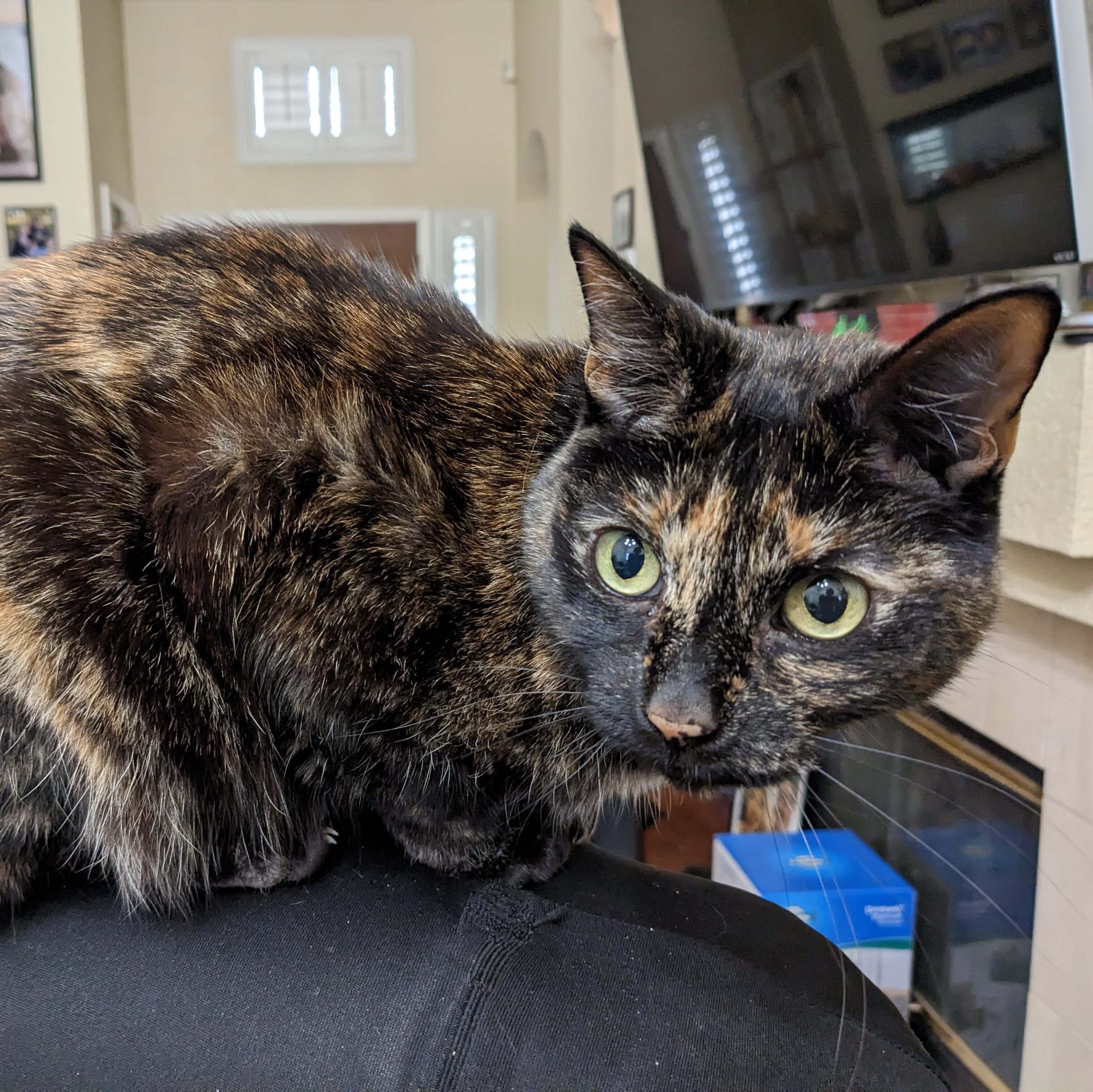In 2000, I wrote a Linux device driver that “decrypted” the output of a certain device, and my company, which hosted open-source projects, agreed to host it.
The “encryption” was only a XOR, but that was enough for the maker of said device to sue my company under 17 U.S.C. § 1201 for hundreds of millions in damages.
The story got a lot of press back then because it highlighted how stupid the then-new DMCA was, and also because there was a David open-source enthusiasts vs. Goliath heartless corporation flavor to it.
Our lawyer decided to pick up the fight to generate free publicity for our fledgling company. For discovery, the maker of the device requested “a copy of any and all potentially infringing source code”. They weren’t specific and they didn’t specify the medium.
So we printed the entire Linux kernel source code including my driver in 5-pt font and sent them the boxes of printouts. Legally they had been served, so there was nothing they could do about it.
So we printed the entire Linux kernel source code including my driver in 5-pt font
Please tell me you used comic sans.
I hope they did. Now that you mention it, it would have been an amusing twist :)
The year is 2025. A massive geomagnetic storm has fried all forms of technology, wiping out hard drives and solid-state drives alike, and scrambled all backup tapes. Coincidentally, a new plastic-eating bacterium has munched on all the compact discs without anyone noticing.
Humanity will rebuild…
The computer chip manufacturing pipeline has been restored, but there is no software to run them. In a dusty office previously owned by a lawyer from a long-defunct dotcom, a treasure trove is discovered. Five metal cabinets filled with paper: the printed Linux kernel source code, in 5-pt comic sans font. One brave soul will enter to transcribe. Mistakes are not an option. We all thank you for your sacrifice.
Final twist, nobody can compile it because it uses GCC extensions that no recovered compiler supports.
Printed in wingdings + given ascii conversion table to decypher
Doubly-devilish as it’s not fixed width. Microsoft Bob would be proud.
I stare at Linux source code very often looking for vulnerabilities.
I unironically have printed pages out to sit down with.
The idea of having the whole kernel printed… is… fun. Lol. How would your organize it for reading? Different chapters that are the directories of the kernel code ?
Why would they organize it in any way? It was not one of the requirements… so, alphabetically.
Obviously and we are talking per line and not per file are we?
Per byte
Alphabetically, per bite. It is beautiful.
The first 40000 characters are “a”
per bit
I’d love to hear more about this - do you do it professionally (for preventative reasons), as a side hobby, or as an attacker for malicious/selfish reasons? No judgement, genuinely curious as it takes a certain personality type to do this kind of work and I find it really interesting.
I think they just stare at it, hoping the vulnerabilities come to them in a moment of revelation. A Linux Joseph Smith, the kernel playing the part of the Golden Plates.
The small overlap of my two largest hobbies, programming and making fun of Mormons. Perfect.
OP said this happened in Utah, so maybe so!
Professionally
My title is senior vulnerability researcher. Focus on mobile devices. That’s all I can really say without doxing too much
But the Linux kernel is always a juicy target because of the coverage and exploit there gets you.
Neat. Why is Linux kernel relevant for many mobile users? Is iPhone built off of it the same way Mac OS is?
What do you mean by coverage and exploit?
MacOS and iOS have Darwin as their base, which is really a mutt. Apple started with the NeXTSTEP kernel, which was a mix of 4.3BSD and Mach, then folded in some FreeBSD, other open source components, and some in-house code.
It’s Android that uses the Linux kernel as its base, and the millions of phones makes it a juicy target.
Not too surprising that iOS has linux in its DNA, but never realized Android does too. Always assumed it was more windows-based. Good to know.
iOS doesn’t have any Linux.
FreeBSD is not Linux. Linux is a kernel and Apple uses Mach, a different kernel. They do both share that they’re POSIX, but OS X is actual, factual, UNIX, and Linux has never paid the money to qualify.
How different is the FreeBSD kernel from the Linux kernel?
Like in terms of interfaces, if I were to port a device driver, am I just changing some header files and some constants/enums/ifdefs?
Or there’s like entirely different function signatures / APIs?
My bad I’m conflating bash and Unix. From my end both apple and Linux use bash so they have the same underlying base…but I realize that’s not accurate, and even unix and bash are not synonomous.
MacOS is based of a BSD distrobution of Unix. iOS is a fork of MacOS
Ah ok makes sense
OP said it happened around the year 2000. Linux was at maybe 2.4.something back then. The kernel was much smaller then than it is today.
Imagie if they included modern AMD GPU drivers.
Legally they had been served, so there was nothing they could do about it.
Somehow I doubt this.
Maybe it’s true but legally I know in California you are required to do your briefs in 12 point font. While that’s briefs, I would imagine evidence would be under the same banner. It definitely WOULD be illegal to do it in 1 pt font or intentionally making it unreadable. I would imagine if the other side wanted to make it an issue they could back to the judge and he’s probably have it out with you.
Maybe the lawyers wisely replaced your malicious compliance with correct sized print with out telling you, maybe the other side didn’t care.
This was in Utah. I’m no lawyer. Maybe it wasn’t legal. What’s what our lawyer said he did.
I don’t think the font size matters too much in this, it’s just the printing the whole source code, including a lot of not directly relevant things, and sending all of that over in a few boxes instead of sharing the project files with them that is very malicious.
It’s also very common in legal cases to share evidence printed out, instead of in digitally, to make sure it isn’t easy for the other side.
So you like source code? Well then! HAVE ALL THE SOURCE CODE IN THE WORLD!
Yo dawg
I heard
You like
Source code
So we
Put source code
In your source code
Just out of curiosity…
How many pages were there?I don’t know. I didn’t do the printing. The law firm did it. But I remember our lawyer mentioning that they fedexed over 20 cartons of printing paper. Assuming 500 sheets per ream and 5 reams per carton, that would be 50,000 sheets, or 100,000 pages since it was printed on both sides to be even more annoying.
That’s beautiful. Simply beautiful.
Damn. Did they ever find your actual source code in there
No idea. That company folded before it could even respond. It was a typical dot-com with a completely ridiculous business model. That’s why our lawyer decided to fight the suit: he figured they’d collapse soon anyway, so we might as well milk the lawsuit for the publicity.
deleted by creator
Approximately one forest
Since Lemmy isn’t pay to win, you get this: 🎖️
This just made me briefly wish lemmy had awards
Smart man
Epic!
Please tell me they used bike couriers.
Your lawyer destroyed a forest to comply maliciously. Sort of not the best way to do it IMO.
Na, they’ve got managed forests and it’s fine. Your comment had me google to see and it’s actually pretty interesting.
As somebody who lives in an area with an active logging industry, I can tell you that parts of the world with an economic interest in their forests still have lots of trees whereas areas that do not are very likely to have destroyed most of theirs.
The relationship between paper use and the environment is not what you think it is.
You’re the hero that GitHub needs.
The irony is that nowadays you could just say “well, the codes open source and all hosted on GitHub…”
Double irony is they’d also send a takedown to github claiming the code contains their IP due to being too ignorant to comprehend that none of the code contains any of thiers to do what it does
Wikipedia has XOR truth tables and contains my very secret trade secrets!
I was a tech journalist in the early 00’s and I remember writing about that story or one like that.
A similar thing happened with Microsoft, who either delivered or was served the full documentation of some office format printed out. It’s a pretty popular form of malicious compliance, also paying people in bags of coins.
Please tell me all the newlines were removed from the source code and it was minified to save paper.
Oh man, if you gave a programmer minified C code with no comments, whitespace, or newlines in printed paper, they’d probably charge more than your lawyer to read that shit.
Removed by mod
You could scan it and that would easily be the fastest way to actually deal with they problem, minified or not.
Did the device happen to be the CueCat?
Now that’s a name I haven’t heard in a long time.
The guy who invented it sounds like a certified nutcase.
In 2016, Pulitzer appeared as a treasure hunter on The Curse of Oak Island on the History Channel. He searched for the Ark of the Covenant and working with amateur historians from the Ancient Artifact Preservation Society he claimed that a sword found in the waters off Oak Island in Nova Scotia had “magical magnetic properties” and was evidence of Roman presence in North America and contact with the Miꞌkmaq, which a historian of that people dismissed. An archaeologist and a science writer criticized Pulitzer’s claim, suggested the sword was a replica said that Pulitzer threatened to sue them.
Certainly sounds like the same guy.
Amazing! What a great story.
Legally they had been served, so there was nothing they could do about it.
Pretty sure the can go to the judge and as you to deliver the information in a more friendly format.
Yea, as entertaining as this is, it sounds like they already had the source from the repo and made the request to make sure nothing was being hidden from them (standard discovery). They would have just re-requested in digital format.
Should have sent it xor since they already know how to decode it.
bravo, I logged in just to upvote this
Was this for the CueCat? Because it sure sounds like that! Bravo!
“only an xor” would pretty much imply any of most stream ciphers. It’s what you xor with that matters.


















